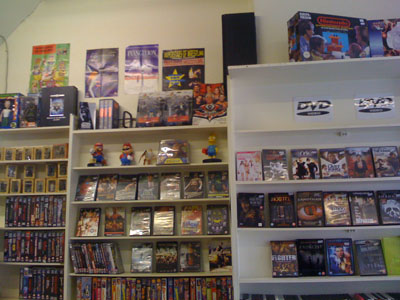A few years back there was a distinct lack of offline co-operative games for home consoles, and lo and behold, with the release of Monster Hunter Freedom Unite PSP owners have access to the definitive version of the handheld sensation from Japan.
As a game premise it sounds quite dangerous in both senses – the life of a hunter killing ferocious beasts against the backdrop of an MMO-like grind and repeat scenario, but to summize it as such does the game a great disservice.
Trials and tribulations
- The premise of Monster Hunter is relatively simple, rather than levelling up your character you improve your armour, weapons, and tactics for completing your next hunt, the sense of challenge and reward is palpable.
- The cycle of challenge and reward are one of the main reasons to play, the eurphoric sense of accomplishment you get from taking down an enormous monster from your talent alone is one of the the most rewarding gaming experiences ever.
- New players to the series will have to spend a long time getting used to how the game plays. This will mean many hours in tutorials to improve yourself. The steepest learning curve I have ever seen in a video game may be too much for most people.
- The game has many barriers to entry, but just as your confidence may start to grow, one particular boss creature is likely to smash you down a peg or two (over and over) one potential hurdle is bad enough, but two?
Look and feel
- The game world looks gorgeous, from the outdoor map areas especially. Capcom manages to balance the sense of scale perfectly; creating outdoor spaces that you can quickly grow accustomed to, as well as a perfect town, farm and home area that doesn’t confuse, yet adds extra value during battle downtime.
- Weapon and armour creation games are two a penny, but the level of detail exhibited in Monster Hunter is unlike any other. You ARE in effect your equipment, and hours of work will go into creating and improving every piece of your set to enhance your chances out on the battlefield.
- Memorising multiple weapon controls is tricky and may force you to make very important decisions about your favoured gameplay styles very quickly. The animations and time needed to manuovre, control and battle your enemies are extremely clunky at first and are at times of danger quite frustrating.
- Repeating missions will become nessersary in order to gather materials and scope out areas, while this may suit some, the lack of story as well as having to revisit the same areas has the potential to become repetitive after time.
Solo and multiplayer
- Monster Hunter Freedom Unite is an extremely rewarding multiplayer game as is clearly designed with this in mind. Parties of up to four people can team up to down monsters that are tricky to manage alone, with the games inventory system allowing you to share and recieve items from each other on the fly.
- For those unable to play multiplayer the Felyne companions provide an adequate (if quite noisy) alternative to playing completely alone, training and improving your Felyne’s skills as well as your own is a welcome challenge.
- The decision not to include online multiplayer is a puzzling one, as this would have been how the vast majority of gamers would have experienced it. Particulary puzzling as the game is marketed as a multiplayer game but then can only be played using local wireless. Leaving this important feature out is inexcuseable.
- This is a much-harder and less satisfying game alone, multiplayer improves this challenging game no end, so it’s quite sad that many people will not be able to experience the game as intended.
In conclusion
Monster Hunter Freedom Unite is one of the most rewarding handheld multiplayers of recent years; an improvement over the previous installments and a freshly prepared complete package for those who are new to the series.
If you can make it past the odd controls and occasionally obtuse inventory system, this is a wonderful game that will give you many hours of pleasure, it’s purely for those who like a gaming challenge – on their terms, and the PSP is a perfect format for it.

























